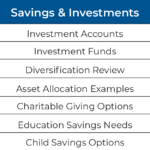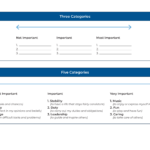Fear of judgment is an emotion that creates anxiety for many people. For example, seeing a doctor can be stressful for people who fear they will be judged for the current state of their health (or for their health choices and behaviors). This anxiety can lead people to avoid going to a doctor altogether, even when they know that going would be the ‘right’ choice for the sake of their own health. Consumer research has suggested that this fear of judgment also extends to people who may benefit from hiring a financial advisor. Because just as it is common to feel anxiety about revealing the details of one’s physical health to a health professional, disclosing details about one’s financial health – and the potential for being judged based on their lack of financial knowledge or their past financial behaviors – can lead to Financial Advisor Anxiety (FAA).
While FAA can affect different people in different ways (for example, women were shown to feel more anxiety about being unfamiliar with financial terminology, while men worried more about being judged on their past behavior), the result often ends out being that people tend to avoid seeking out professional financial advice when their level of anxiety becomes too great.
For financial advisors, then, this means that a possibly significant number of potential clients may never even reach out… not because they don’t want or need financial advice, but because they are simply too anxious about the idea of revealing personal financial details to a stranger to take the step of making an initial phone call or email. However, advisors can help alleviate the impact of FAA on prospective clients – thereby improving the probability of potential clients actually reaching out to the advisor – by taking proactive steps to alleviate the fear of judgment before the initial contact.
For example, because unfamiliarity with financial terminology is a source of FAA for many people, adding a glossary of common financial terms (e.g., IRA, 529 Plan, Fiduciary, etc.) on the advisor’s website can be a helpful resource – not just as an educational tool, but also an acknowledgment that financial jargon can be obscure and intimidating to non-experts, and a signal that the advisor will not judge anyone for being unfamiliar with financial planning terminology.
Advisors can also alleviate FAA by sharing some of their own vulnerabilities by talking about their fears and challenges with finance. For instance, an advisor could record a video for their website about their own journey towards becoming an advisor, the obstacles they encountered in getting there, and the benefits they have realized by working to overcome their own anxiety. And in their own communities, advisors can model non-judgmental behavior to normalize some of the fear and stress that people often have when talking about money by, for example, talking openly in casual conversation about common financial issues that people experience (and how the advisor works with their clients to overcome them).
Ultimately, alleviating Financial Advisor Anxiety comes down to reducing the fear of judgment and shame that can paralyze some people into not seeking financial advice. And finding strategies to help individuals overcome FAA can be a powerful way for advisors to increase the number of prospects who reach out to them (because they were able to overcome their anxiety enough to do so). Which means that those prospective clients who do reach out will also be more likely to have a higher level of comfort and trust in the advisor from the start!




 Welcome back to the 260th episode of the Financial Advisor Success Podcast!
Welcome back to the 260th episode of the Financial Advisor Success Podcast!




